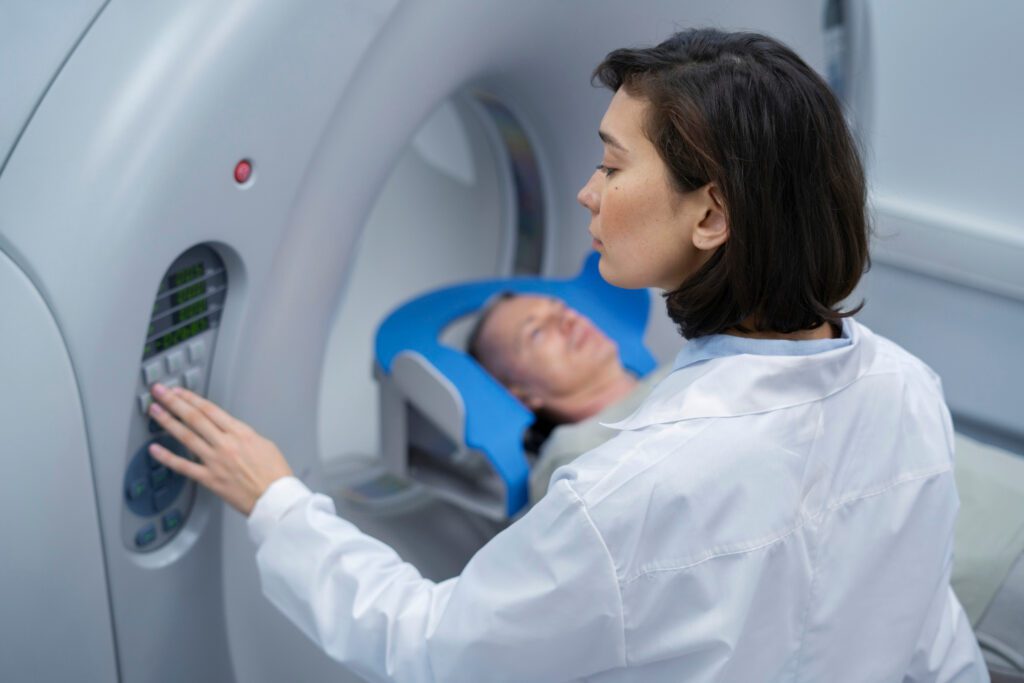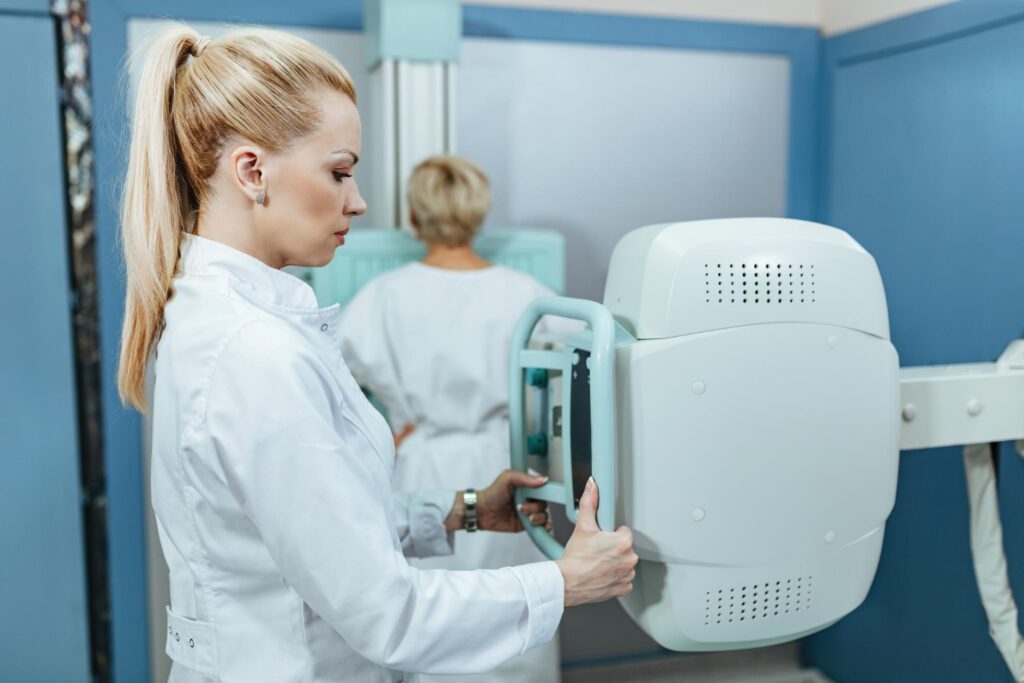Breast cancer is one of the most common cancers affecting women worldwide. It’s a complex disease with various treatment options, among which radiation therapy plays a crucial role. This guide will delve into the intricacies of radiation therapy, exploring its benefits, process, and impact on breast cancer treatment.
Key Takeaways:
- Crucial Treatment: Radiation therapy is vital in breast cancer treatment, targeting and destroying cancer cells.
- Types Available: There are two main types: external beam radiation and internal radiation (brachytherapy), used based on the patient’s condition.
- Various Uses: It can be used post-surgery, pre-surgery, or as a standalone treatment when surgery isn’t feasible.
- Managing Side Effects: Effective management of side effects includes skin care, fatigue management, and proper nutrition to maintain patient well-being.
- Technological Advances: Innovations like IMRT, Proton Therapy, and IGRT have enhanced the precision and effectiveness of radiation therapy, reducing harm to healthy tissues.
What is Radiation Therapy?
Radiation therapy is a treatment that uses high-energy rays or particles to destroy cancer cells. It’s a targeted approach, meaning it focuses on the affected area to minimize damage to surrounding healthy tissues. This therapy works by damaging the DNA of cancer cells, which inhibits their ability to reproduce and grow.
Types of Radiation Therapy
External Beam Radiation: This is the most common type of radiation therapy for breast cancer. It involves directing radiation from a machine outside the body to the cancerous area. Treatments are usually given five days a week over several weeks.
Internal Radiation (Brachytherapy): This method involves placing a radioactive source inside the body near the cancer cells. It can be used alone or in conjunction with external beam radiation, often in cases where the cancer is localized.
When is Radiation Therapy Used?
Post-Surgery: Radiation therapy is commonly used after surgery (lumpectomy or mastectomy) to eliminate any remaining cancer cells and reduce the risk of recurrence.
Pre-Surgery: In some cases, radiation may be used before surgery to shrink tumors, making them easier to remove.
As a Standalone Treatment: For patients who cannot undergo surgery, radiation therapy may be used as the primary treatment to control and manage breast cancer.
Benefits of Radiation Therapy in Breast Cancer
Reducing Recurrence: Radiation therapy significantly lowers the risk of breast cancer recurrence by targeting residual cancer cells.
Shrinking Tumors: It can effectively reduce the size of tumors, especially in advanced stages, making them more manageable.
Palliative Care: For metastatic breast cancer, radiation therapy can alleviate symptoms like pain and improve the quality of life.
Preparing for Radiation Therapy
Initial Consultation: This involves meeting with a radiation oncologist to discuss the treatment plan and what to expect.
Planning Sessions: Detailed imaging scans are taken to map out the precise area to be treated.
Simulation: A mock setup of the treatment process is done to ensure accuracy during actual sessions.
The Radiation Therapy Process
What to Expect During Treatment: Each session is painless and lasts about 15-30 minutes. Patients lie on a table while a machine delivers radiation to the targeted area.
Frequency and Duration of Sessions: Treatments are typically given five days a week for about five to seven weeks, depending on the individual case.
Side Effects of Radiation Therapy
Short-Term Side Effects: Common immediate side effects include skin irritation, fatigue, and swelling in the treated area.
Long-Term Side Effects: These can include changes in skin texture, breast shape, and in rare cases, damage to the heart or lungs.
Managing Side Effects
Skin Care Tips: Using mild soaps, avoiding tight clothing, and applying prescribed creams can help manage skin irritation.
Fatigue Management: Regular light exercise, adequate rest, and a balanced diet can combat fatigue.
Nutritional Advice: Eating a diet rich in fruits, vegetables, and lean proteins supports overall health and recovery.
Advances in Radiation Therapy
Intensity-Modulated Radiation Therapy (IMRT): This technique allows for more precise delivery of radiation, sparing healthy tissues.


Proton Therapy: Proton beams can be directed with high precision, reducing exposure to surrounding healthy tissues.
Image-Guided Radiation Therapy (IGRT): Frequent imaging during treatment ensures accuracy and adapts to changes in tumor size or position.
Radiation Therapy and Quality of Life
Emotional Support: Counseling and support groups can help patients cope with the emotional toll of cancer treatment.
Physical Rehabilitation: Physical therapy can assist in recovering strength and mobility, particularly if treatment affects the chest or shoulder area.
Success Rates and Statistics
Survival Rates: Radiation therapy has significantly improved survival rates, especially when combined with other treatments.
Recurrence Rates: The risk of recurrence drops substantially with radiation therapy, providing long-term benefits.
Combining Radiation Therapy with Other Treatments
Chemotherapy: Often used before or after radiation to kill cancer cells throughout the body.
Hormone Therapy: Targets hormone receptors in breast cancer cells, reducing growth and spread.
Targeted Therapy: Focuses on specific molecules involved in cancer growth, often with fewer side effects than chemotherapy.
Conclusion
Radiation therapy is a cornerstone in the treatment of breast cancer, offering significant benefits in reducing recurrence and managing symptoms. With advances in technology and comprehensive care approaches, patients undergoing radiation therapy have a promising outlook. Continued research and personalized treatment plans will further enhance the effectiveness of radiation therapy in the fight against breast cancer.
FAQ’s
What should I expect during radiation therapy sessions?
Each session is relatively quick, lasting about 15-30 minutes. You’ll lie still while a machine delivers the targeted radiation. The process is painless.
How do I know if radiation therapy is working?
Your doctor will monitor your progress through regular follow-up appointments and imaging tests to assess the treatment’s effectiveness.
Can I work during radiation therapy?
Many patients continue to work during radiation therapy, though it depends on individual side effects and energy levels. It’s important to communicate with your employer and manage your workload accordingly.
What should I avoid during radiation therapy?
Avoid using harsh skincare products on the treated area, exposing it to direct sunlight, and wearing tight clothing that could irritate the skin.
How long will the side effects last?
Most side effects, like skin irritation and fatigue, subside within a few weeks to months after completing treatment. Long-term effects are less common but can persist for years.



